Q: What inspired you to write COUNTING ON GRACE?
A: It all started with a simple black and white photograph taken by Lewis Hine, the great child labor photographer. The 12 year old mill girl’s name was Addie I found out later, but Hine’s caption read simply: “Anemic little spinner in North Pownal Cotton Mill, 1910.” For once the words meant little to me. It was the girl’s eyes. They are simply unforgettable. I felt that she was begging me to tell her story.
Q: So you decided to write a book about Addie?
A: No, I didn’t know anything about Addie herself. I invented an entire life for her. I named the girl Grace Forcier, I made her French-Canadian as so many of the mill families in New England came down from Canada. Then I researched mills and Lewis Hine and photography and living conditions in Vermont towns and French Canadian music. And finally, I imagined what might have happened the day Hine walked into that mill. What might he and Grace have said to one another? How might each have changed the other’s life?
Q. What’s the most interesting relationship in the book?
A: The connection between Grace and her mother. Imagine if at the age of 12, you had to get up every morning to go to the mill with your mother and take the bobbins off the six spinning frames she runs. And every extra minute you take to “doff” those bobbins, your mother doesn’t get paid. So she’s yelling at you all day long to hurry up. And what if you’re left handed so you can’t work as fast as your older sister? If you drop something or slice a thread, the whole machine goes down and it takes hours to get it running again. What incredible pressure that puts on a child.
Q: So that’s the meaning of the title, COUNTING ON GRACE?
A: That’s one of them. Grace’s mother, in fact her whole family, counts on her. Grace is good at math so there’s another. Grace is horrified when she learns that no mother “counts” on her children until they reach the age of ten because so many of their babies died. There’s another twist on the title. And then, of course, there’s the connection to spiritual grace. That kind of grace walks into the mill in the form of Lewis Hine. I love titles that resonate in a number of ways. At one point in the book, Grace tells us that “Grace a Dieu, means “thanks be to God.” That’s what her name means… thanks be. .
Q: Is it true that you found the actual girl in the photograph?
A: Yes. That little girl actually lived to the age of 94 which seems incredible considering how thin and ill she looks in Hine’s photograph. I met recently with two of her descendants who didn’t know that Addie’s picture had appeared on a $.32 postage stamp in 1998 one hundred years after her birth. They didn’t know that her photograph has been reproduced hundreds of times. It was even used in a Reebok ad condemning child labor in Pakistan. One of Addie’s great granddaughters works in the dental office where another of Addie’s granddaughters is a patient. And each didn’t know about the other. Until I walked into their lives.
Q: Did Addie know that her photograph had become a part of American history?
A: No, Addie knew nothing. Just think. If she’d lived five more years she might have walked into a post office to buy a stamp and paid thirty two cents for that picture of herself. Wouldn’t that have been incredible?
Q: What do you think Addie would have thought of the character Grace?
A: I like to think they would have been friends. From what I can tell, they were both loving, but scrappy. Determined to survive and triumph no matter how the odds were stacked against them. I thought I had imagined a really difficult life for my character, Grace. She was furious with her mother and fought with her and even ran away, but at least Grace had a mother. Addie lost hers when she was two years old and then her father abandoned her and her sister. Addie’s little cousin Rose burned herself up when she was playing with matches at the age of three. Addie’s life was even tougher than the one I had imagined for her.
Q: How did you find all this information about Addie?
A: I started with the 1910 census. That gave me her real last name because nobody knew it. Then I spent hours in the local clerk’s office going through lists of names and dates. When Addie got married, I lost the trail for a while and then picked it up again. And I hired a researcher who was dogged. We saw ourselves as historical archaeologists, digging through old records for the bones of a person’s life. And all the time we felt as if Addie was calling to us like a child in a hide and seek game…”Yoo hoo, over this way… here I am.”
Q: What made you work so hard to find Addie?
A: Maybe it was because she had worked so hard from such an early age. She was put in that mill when she was eight years old. She had to stand up on a soap box to reach the bobbins. All that hard sad wisdom is right there in her face in Hine’s picture. I couldn’t bear for her to be forgotten. Her picture had become a symbol, but I wanted to know who SHE was. Lewis Hine, the photographer, felt the same way. He once said he was more interested in persons than in people. Me too. That’s the way a novelist thinks.
Q: Did you know that you always wanted to be a writer?
A: Ever since I was about twelve. I grew up in Washington, DC., the middle child and only girl, surrounded by five brothers. Storytelling was a kind of defense for me. It helped me survive. Also, my father was a famous journalist, Stewart Alsop. His column appeared every week on the back page of Newsweek Magazine so I thought writing was just a regular, everyday profession like selling shoes or building houses. When I came home after school, my father was typing away in his office and I could hear the banging of the keys the moment I opened the kitchen door. He pulled words out of the air and wrote them down and there was food on the table and shoes on our feet. Writing didn’t seem like a huge deal. I only realized how hard it truly is after I tried doing it myself.
Q: What sort of process do you go through to write a novel?
A: It’s different for every book. I keep thinking it will get easier but then I set the bar higher to challenge myself. But what never changes is that I have to know the character well in order to get the plot moving and that’s the hardest part. Creating a living, breathing character from nothing but a photograph, for example, is like trying to make a snowman when the snow is dry and doesn’t pack well and keeps blowing away in the wind. Once the character speaks to me, well then the fun begins.
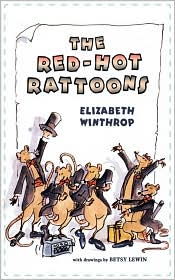
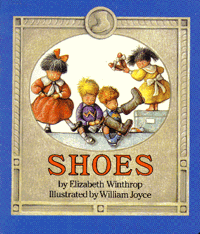

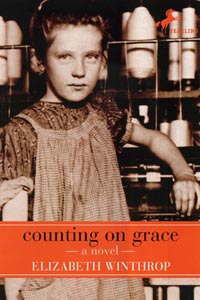


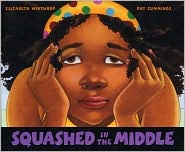

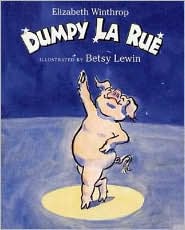



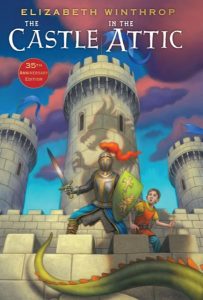

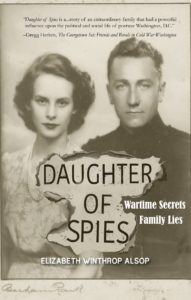
I love your work!
Thank you, Catherine.
Hey! My name is Addison. I just read this book and I was literally crying the entire time! It was such a great book; really moving! How did you find out about what really happened at the mills?
Addison, I’m so glad you were moved by the story of Grace. In order to write the book, I did lots of research in the Pownal, VT area. I spoke to the grandchildren of children who had worked in the mills, I read lots of books and I kept looking at that photograph of Addie. It was her tired eyes that inspired me.
Elizabeth
Where in Pownal is the mill site? Is there a physical address? Thanks.
Tony, the mill is on Rte 346 not far from Route 7. You can find the map to the site on the Teachers Guide to Counting on Grace page of my website.
what is the address of where Arthur lives in Massachusetts?
Arthur moved to Manchester, New Hampshire to work in the Amoskeag Mills.
How did you decide to name the characters there names now?
I looked through books of history of the time period and chose names that seemed appropriate to their French Canadian heritage.
How are grace and mamére alike and different
why did you start the book in the classroom? Is this so the reader gets to know her right away?
Kai
age 11
That’s exactly right, Kai. Good observation.
Elizabeth
Q: What were a few things that really happened in 1910 with the mill workers???
Everything in my book COUNTING ON GRACE, happened to mill workers in the early decades of the 20th Century. The story is based on real experiences and accidents that mill workers suffered in those years.
I really love the book but the story was sad.
That’s one of them. Grace’s mother, in fact her whole family, counts on her. Grace is good at math so there’s another. Grace is horrified when she learns that no mother “counts” on her children until they reach the age of ten because so many of their babies died. There’s another twist on the title. And then, of course, there’s the connection to spiritual grace. That kind of grace walks into the mill in the form of Lewis Hine. I love titles that resonate in a number of ways. At one point in the book, Grace tells us that “Grace a Dieu, means “thanks be to God.” That’s what her name means… thanks be. .
this book is amazing
Elizabeth, i read this book when i was about 10, but i am now 16, and haven’t read this book in a really long time. Its a fantastic book by the way, one of my favorites actually.
I was wondering, what is the type of cotton machine used in this book?
the reason why is because i am writing a book about a kid in New Prussia (i decided that they(the Prussians) rallied up and overthrew the monarch of Germany) in the year 2062. He is sent to work at the age of 12 because he loses his father and is now the sole provider of his mother and four siblings. He works at a cotton factory. When I was trying to figure out the type of machine used, your book popped up in my head. we just started learning about the Industrial Revolution in APEC class yesterday, so I thought your book would help.
Thank You!!!
Grace is working on a spinning frame. She is a doffer which means she has to take off (“do off = “doff”) the bobbins full of cotton thread and replace them with empty ones.
Your book sounds fascinating. I hope the writing goes well. What is APEC class? And where are you in school?
As an author, I’m so happy to know that you remember COUNTING ON GRACE from when you read it at the age of ten.
Thank YOU…
Elizabeth Winthrop
What did the elevator symbolize
Imani, the elevator was real. Kids were hidden in those freight elevators whenever the inspectors came. As to symbolism, I suppose you can assume it shows how trapped child laborers were then and are today… trapped by their need to work to help their families and what a limited life it gives them.
What do you think?
Elizabeth Winthrop
What are some characteristics of the main characters such as the mother , grandfather, french johnny, arthur, miss lessly and some other characters?
Elijah, what do YOU think? I write the book and then put it out there for readers to come to their own conclusions about the characters. Would be interested in your answers to these questions.. then I’ll give you mine:)
Elizabeth
Who would you recommend this book for?
middle school classes like 5th and above.
Me and my class were wondering today in snack how did you come up with Arthur?
If you look at the picture of the whole group of kids in the back of COUNTING ON GRACE, you’ll see one in the center of the front row. He’s wearing overalls and his hands are folded. He looks worried. He’s my inspiration for Arthur, a kid who understood from the beginning how bad the mill was for all of them.